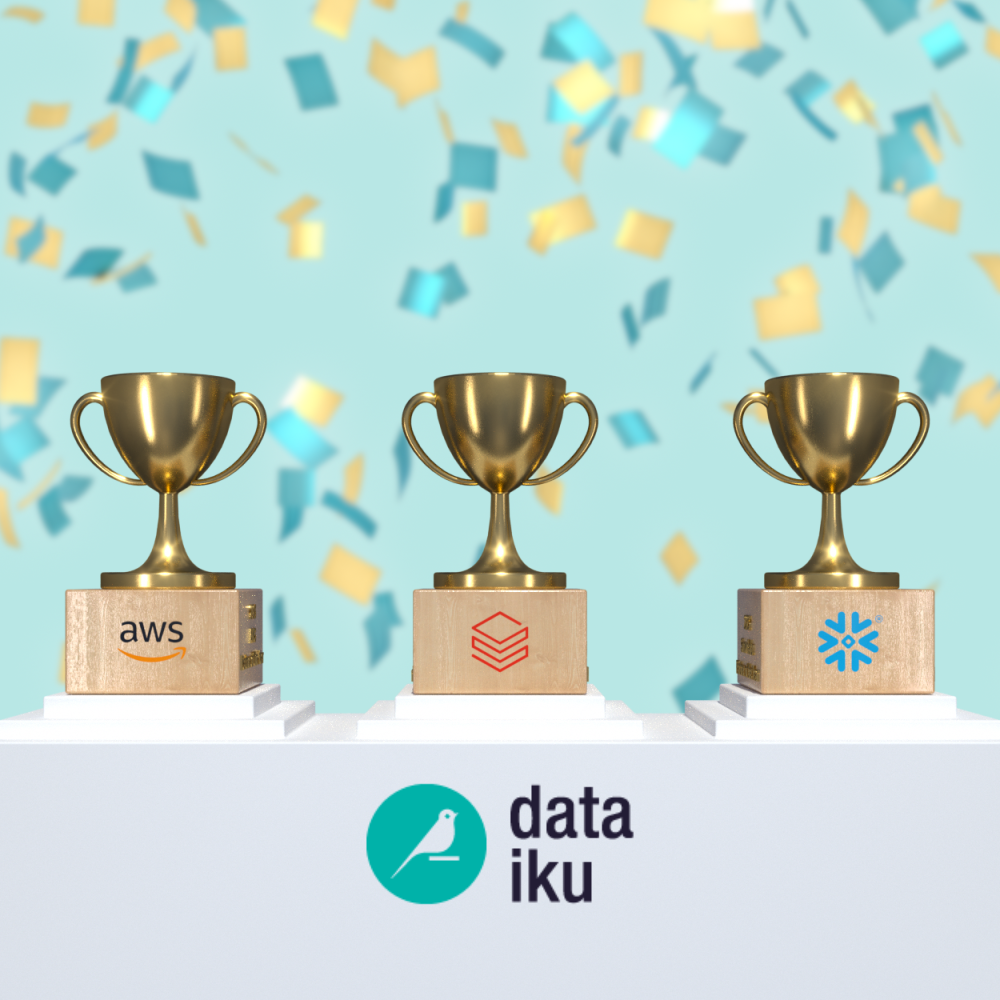Onboarding a user onto an AI platform is a milestone, but it’s not the measure of success. Giving people access doesn’t guarantee impact. Real success comes when users stay, grow, and begin to shape the ecosystem around them. That transformation, from new user to confident contributor, is where the modern Center of Excellence (CoE) proves its value.
In today’s enterprise environments, the CoE is more than a governance team. It’s the core of how data work scales. Through intentional design, strategic support, and active partnership, the CoE becomes an engine for self-service growth, trusted AI, and user confidence across the business.

Don't Manage Users, Cultivate Ambassadors
Self-service AI brings the CoE closer to its users. Among them are individuals who stand out, not just because of their skills, but because of their initiative, curiosity, and ability to influence others. These users are accelerators. When supported intentionally, they increase platform ROI, improve adoption, reduce support burden, and raise the quality of data work across teams.
Building strong relationships with them requires proactive engagement. Leading CoEs spend time interviewing, shadowing, prototyping, testing, and iterating with these users. They involve them in platform design decisions and invite them to become collaborators in shaping what’s next. As a result, the CoE extends its reach and builds a user-led model of engagement that scales.
As a COE, you should be looking to help encourage ambassadors. It's almost like a network effect.
- Jon Tudor, Director of Business Architecture at Dataiku
Documentation Is Infrastructure
Documentation is often misunderstood as internal hygiene. In a mature CoE, it’s a core component of the user experience. A well-designed documentation system becomes the first place users turn when they need help. It lowers the burden on central teams and speeds up problem-solving across the organization.
This kind of system starts with accessibility. A central, easy-to-remember starting point. Clear organization aligned to mental models and user workflows. Embedded guidance at key moments across the journey. And just as important, content tailored to the specifics of your organization, such as data access rules, governance processes, common patterns, support channels, and reusable assets.
Vendor content alone can’t account for internal complexity. That’s why CoEs invest in documentation that reflects how their users actually work. When done well, it becomes an always-on guide that grows with the community.
Designing User Journeys That Encourage Progress
New users often enter a platform with curiosity but no clear direction. The CoE’s job is to make the next steps obvious. A well-mapped journey guides users from their first interaction to repeatable success.
That path typically begins with identifying a business need, followed by searching for reusable resources or connecting to relevant data. As users explore and build, they create models, document their work, and share insights that drive decisions. Along the way, the CoE can streamline the experience, reinforce standards, and reduce friction.
This journey isn’t theoretical, it’s operational. It defines tool choices, support touchpoints, and training content. When the process reflects the reality of work across personas, users build confidence faster and continue investing in the platform.
Building Communication That Creates Community
Self-service ecosystems grow through communication. As users span departments, time zones, and skill levels, consistent messaging and shared language hold the program together. Effective CoEs communicate with rhythm and relevance. Office hours, newsletters, internal wikis, ambassador meetups, onboarding messages, and roadshows all serve different user needs. What matters is consistency. Users should always know where to look, who to ask, and what’s happening next.
The format matters too. Some users prefer concise written updates, others rely on video walkthroughs, and some need hands-on interaction. A strong communication plan meets users in their preferred channels with meaningful content. When users feel seen and supported, they stay engaged and contribute more freely.
When scaling a CoE practice, it’s essential to first assess the types of services and support needed across different teams and user personas. As the variety of workloads and business use cases increases, the CoE must expand, tailor and be flexible with its support and engagement strategies to meet the evolving needs of the enterprise.
- Christie Hampton, AI Infrastructure & Data Science Architect
Scaling Training Without Losing Depth
As platform adoption increases, so does the need for effective training. But centralized teams can’t train everyone alone. That’s where a train-the-trainer model becomes essential. The CoE enables this by developing clear, structured training tied to real workflows. Trainers are chosen not just for their expertise, but for their ability to communicate across teams. They’re supported with documentation, a feedback loop, and a curriculum grounded in actual use cases.
Training should start with the work people care about most. Real team projects. Divisional challenges. Use cases that matter. From there, content can scale to broader programs. Live sessions allow for questions and co-creation. When in-person isn’t possible, interactive formats still help maintain energy and trust.
This approach expands the CoE’s capacity while preserving quality. It creates internal champions who continue teaching, even as the platform evolves.
Making Reuse a Natural Part of Work
Reusable assets improve speed, consistency, and quality. But reuse won’t happen just because it’s encouraged, it needs to be built into how users learn and deliver. That starts with expectation-setting. Users are taught to search before they start from scratch. They learn how to evaluate existing assets and contribute back when appropriate.
The CoE plays a major role in creating visibility. High-value projects are surfaced in newsletters or knowledge hubs. Well-documented pipelines, templates, or agents are tagged and curated for reuse. Subject matter experts help maintain quality as adoption grows.
Measurement is what completes the loop. Tracking reuse rates, identifying patterns, and reinforcing top-performing assets allows the program to grow with intention. When reuse is treated as strategic behavior, it compounds the platform’s value over time.
Gamification That Aligns With Meaningful Progress
Gamification can energize a program when it aligns with what users already care about. Activities like contributing metadata, sharing documented projects, or mentoring others can be tracked and recognized.
The most effective programs are simple, visible, and well-integrated. Points, levels, or light competition give structure. Recognition creates pride. Leaderboards and updates can spotlight consistent contributors and motivate continued progress.
These programs don’t have to be elaborate. They just need to feel authentic. When gamification reflects real work and tangible outcomes, it supports the culture CoEs are building.
Evolving From Central Team to Enablement Organization
One enterprise example began with a familiar challenge: The platform was in place, but adoption was shallow and support fragmented. Users relied on workarounds, and value was unevenly distributed.
The CoE addressed this by reframing its role. It introduced structured services: live support, reuse workshops, cost and optimization guidance, prompt engineering, and onboarding programs. Each was targeted to a specific maturity level or user group.
What changed wasn’t just what the CoE delivered, but how it delivered. Services became repeatable, measurable, and aligned to business outcomes. Support evolved into enablement. The CoE became a partner in growth, not just a team that answered tickets.
From Oversight to Insight: A CoE in the Real World
One financial services institution overseeing 620,000+ broker-dealers across 3,200 firms faced a familiar challenge: a data science and machine learning (DSML) platform was in place, but adoption remained fragmented and support uneven. To address this, their CoE team transformed its enablement practice by offering tiered services tailored to business needs from scaling big data workloads in the cloud to supporting the development of platform-native web applications and delivering machine learning, pipeline automation, and GenAI workshops.
But this evolution wasn’t just about expanding the service catalog, it was about sequencing and scaling effectively. The CoE progressed from offering basic support and best practices to empowering users to ideate, experiment, and confidently launch big data workloads. Their blueprint illustrates what it means to shift from oversight to insight, and from centralized control to scalable, user-driven enablement.
Engagement Is the Work
Platforms don’t scale through access alone. They scale when users gain momentum, when they know how to navigate complexity, trust the ecosystem, and see the results of their work. That kind of engagement isn’t automatic. It’s the outcome of smart design, persistent communication, thoughtful training, visible progress, and strong partnerships.
Modern CoEs are designed around that outcome. They create spaces where users succeed on their own terms, with just enough support to stay unblocked and enough structure to stay aligned. That’s how engagement becomes durable and how AI programs turn into business capability.




